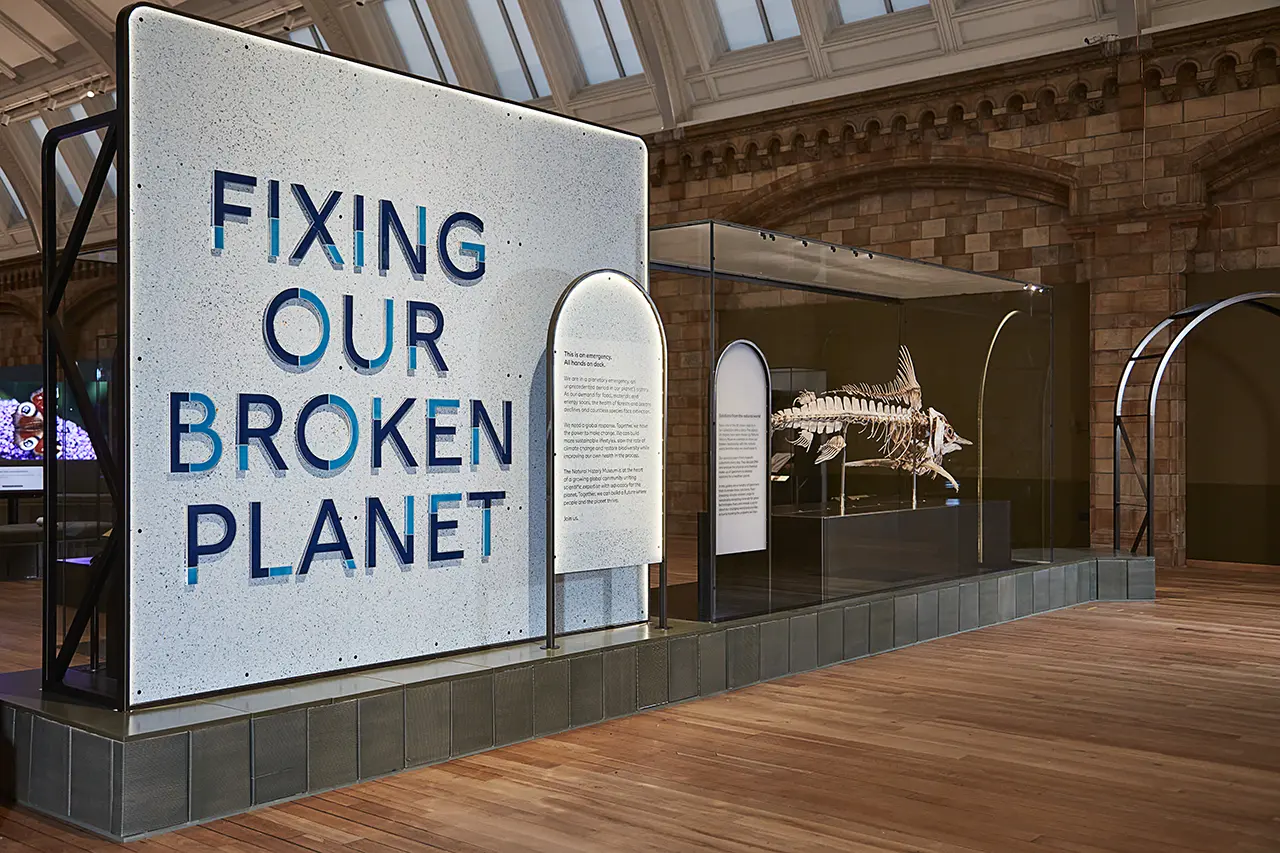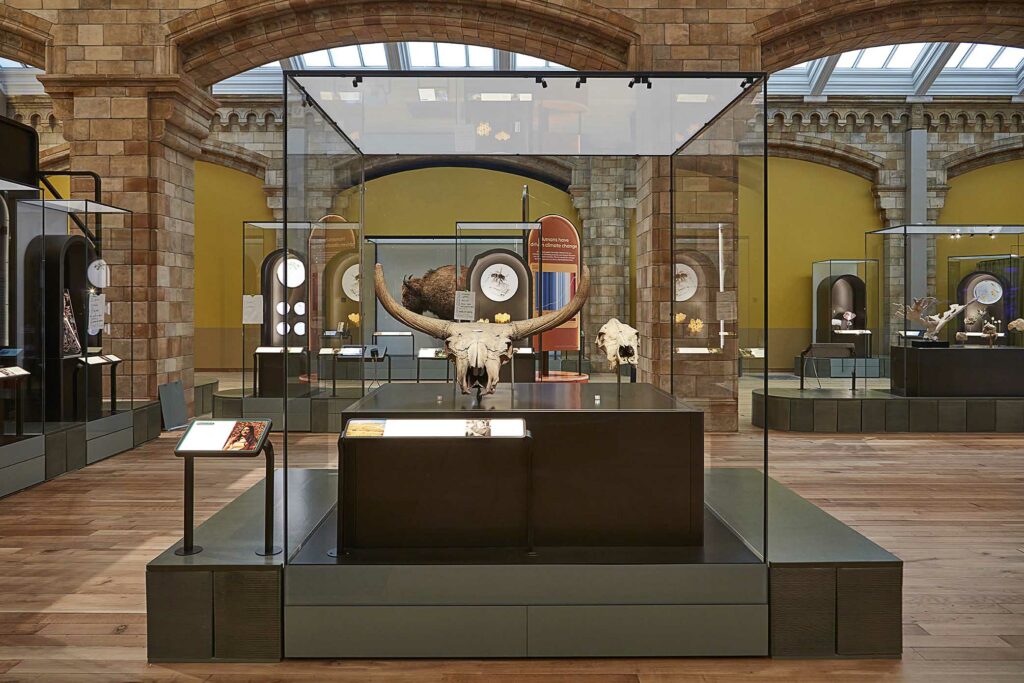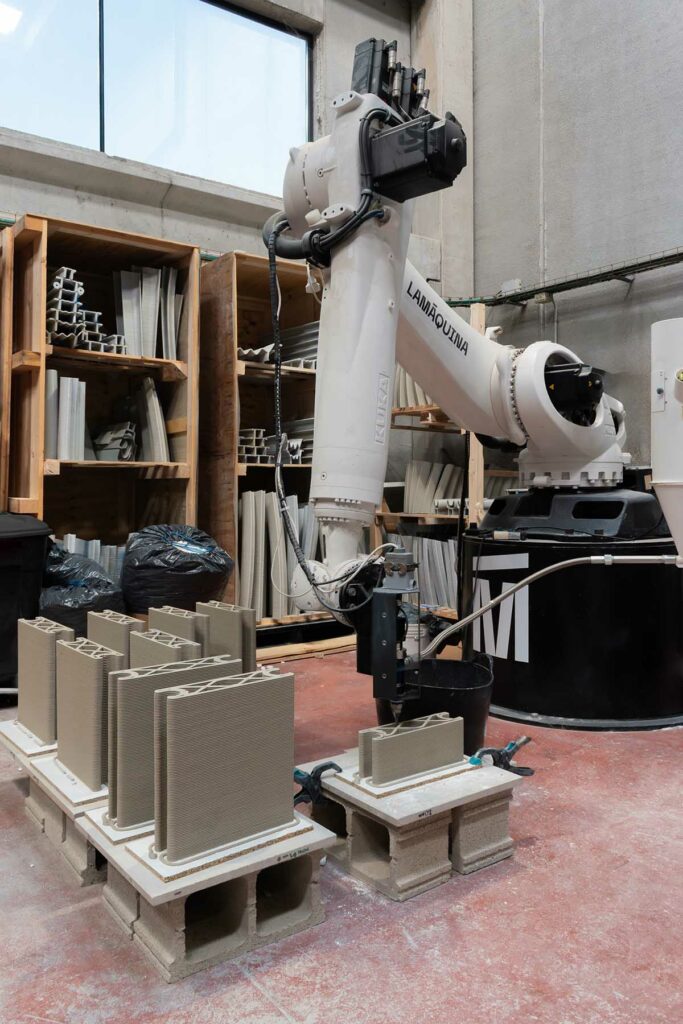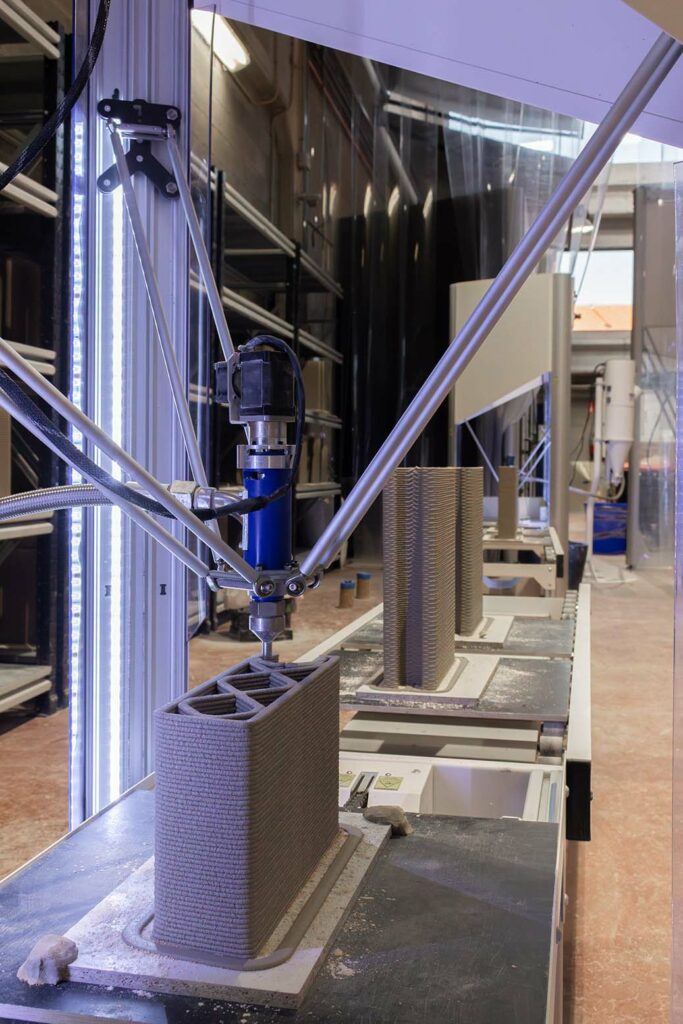New Gallery Made of 3D Printed Ceramics
Fixing Our Broken Planet opens at the Natural History Museum with robotically manufactured display cases engineered and produced by LAMÁQUINA.

The Natural History Museum (NHM) first opened its doors on the 18th of April 1881 in South Kensington, London. Its architecture is one of Britain’s most striking examples of Romanesque architecture, conceived by Alfred Waterhouse.
This iconic landmark, entirely built from terracotta, was envisioned as a ‘cathedral to nature’ to celebrate the richness and abundance of life on Earth. The decision to use terracotta was made because it was believed to be a more hygienic option in a heavily polluted London, as well as a less expensive, labour intensive and slow alternative to stone manufacturing.
CONTEXTUAL
RESPONSE
3D printed ceramics for a heritage site
With the opening of the new gallery Fixing Our Broken Planet, the space underwent a full restoration, aimed at reviving its original Victorian features while prioritising the use of sustainable materials and methods. Just as the choice of terracotta was a contextual response to the needs of its time, the design of this new gallery reflects today’s priorities.
The design was led by the NHM’s in-house team of architects, with a strong focus on minimising the environmental impact of production and installation. As part of the sustainability due diligence process, a report was developed to assess various manufacturing and material alternatives. The findings supported using robotically produced ceramic pieces as the most sustainable option. To realise this strategy, LAMÁQUINA was brought on board to engineer the design of the 3D printing ceramics for display cases.

SUSTAINABILITY MANUFACTURED
A commitment by the Natural History Museum
LAMÁQUINA produced all the components using 40% recycled clay sourced from the ceramic industry. The entire process was planned to avoid material waste and to ensure maximum precision.

Glazing and firing were carried out at the Ceràmica Cumella facilities, in kilns large enough to fire multiple pieces simultaneously, thereby improving energy efficiency. The firing process was partially powered by renewable energy sources, further enhancing the sustainability of the project.

This gallery stands as an example of how 3D printing can contribute to the renovation of spaces with high conservation constraints. As Doug Gurr, the NHM Director, remarked at the exhibition’s opening: “This is not only talking the talk on sustainability, it is walking the walk.” As a centre of scientific learning, the NHM not only deepens our understanding of the natural world but also leads by example in adopting sustainable practices that will secure its legacy for generations to come.
